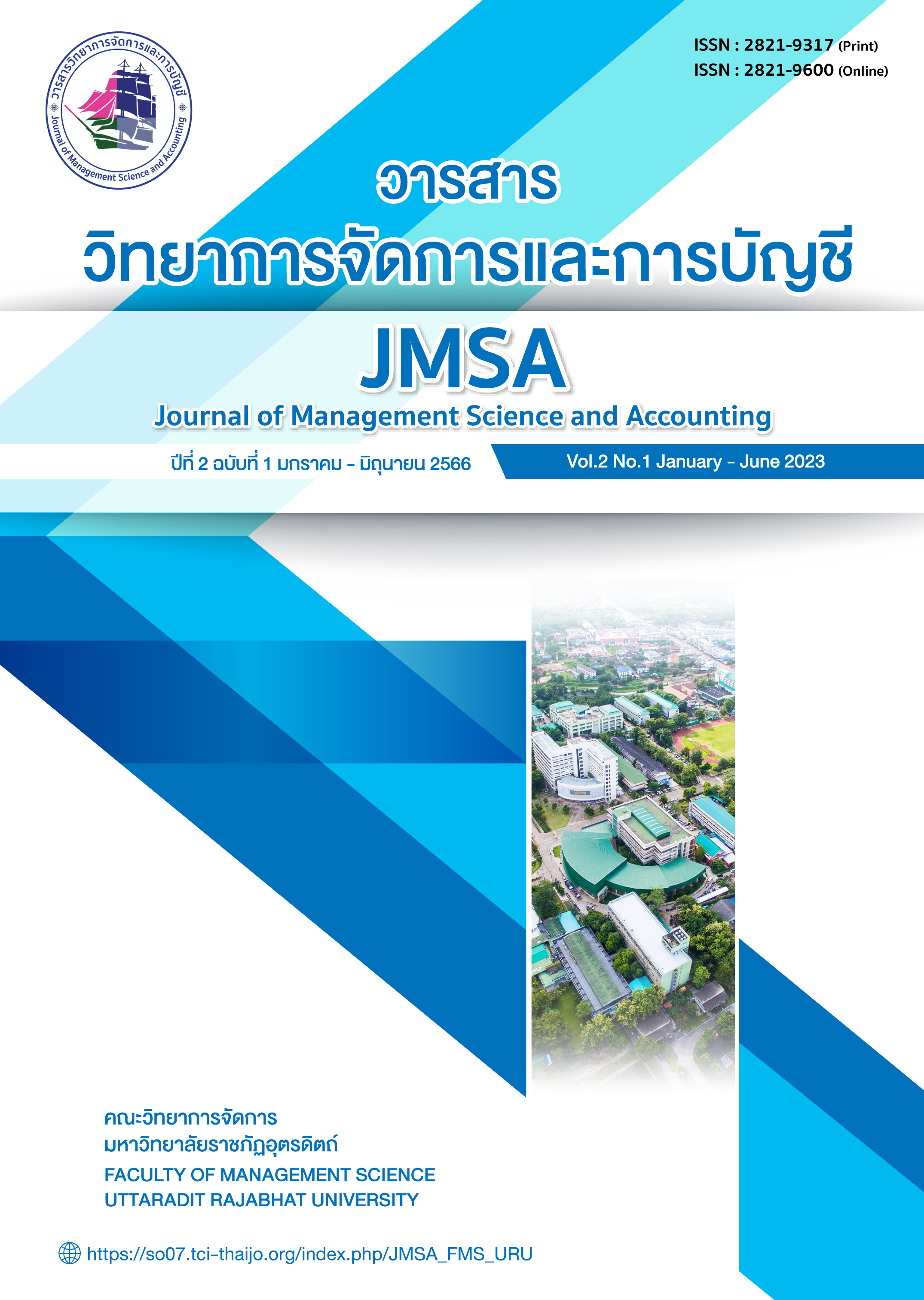Causal Relationship of Attitude and Satisfaction Influencing Willingness to Use Accounting System Innovation of Cooperatives and Agricultural Groups in Three Southern Border Provinces.
Main Article Content
Abstract
The purpose of this research was to study the causal relationship of attitude and satisfaction influencing willingness to use accounting system innovation, by using a questionnaire as an instrument for collecting data from 210 accounting executive officers of Cooperatives and Agricultural Groups in three Southern Border Provinces. The study variables consisted of two endogenous latent variables including satisfaction and willingness to use accounting system innovation, and one exogenous latent variable, namely attitude. These latent variables were measured by 10 observed variables. The questionnaire used showed composite reliability between 0.770 and 0.861. The data were analyzed by SEM.
The results showed that the variable having direct and indirect effects on the willingness to use accounting system innovation of Cooperatives and Agricultural Groups in three Southern Border Provinces was attitude. The results also showed that the model was in congruence with the empirical data. This model exhibits goodness of fit. Thus, Cooperatives and Agricultural Groups should place an emphasis on creating a convenient and easy-to-access accounting system innovation for so that users can have a good experience and positive attitude toward the system.
Article Details

This work is licensed under a Creative Commons Attribution-NonCommercial-NoDerivatives 4.0 International License.
Articles published in the Journal of Management Science and Accounting Uttaradit Rajabhat University It is the copyright of Uttaradit Rajabhat University.
Articles published in Journal of Management Science and Accounting Uttaradit Rajabhat University Considered to be the personal opinion of the writer. The editorial board does not have to agree. Authors are responsible for their own articles.
Authors who publish agree to the following terms:
- Authors retain copyright and grant the journal right of first publication with the work simultaneously licensed under a Attribution-NonCommercial-NoDerivatives 4.0 International (CC BY-NC-ND 4.0) that allows others to share the work with an acknowledgment of the work's authorship and initial publication in this journal.
- Authors are able to enter into separate, additional contractual arrangements for the non-exclusive distribution of the journal's published version of the work (e.g., post it to an institutional repository or publish it in a book), with an acknowledgment of its initial publication in this journal.
- Authors are permitted and encouraged to post their work online (e.g., in institutional repositories or on their website) prior to and during the submission process, as it can lead to productive exchanges, as well as earlier and greater citation of published work.
References
กรมส่งเสริมสหกรณ์. (2564). สารสนเทศกรมส่งเสริมสหกรณ์. ค้นเมื่อวันที่ 30 มิถุนายน 2565, จาก: https://www.cpd.go.th/information-cpd/info-data-cpd.html.
ละออ มามะ และนันทา จันทร์แก้ว. (2563). ปัญหาการบริหารความเสี่ยงผู้ตรวจสอบบัญชีสหกรณ์และกลุ่มเกษตรกรจังหวัดยะลา. WMS Journal of Management Walailak University, 9(2), 59-71.
Aaker, D. A., Kumar, V., and Day, G. S. (2001). Marketing Research. New York: John Wiley and Son.
Barclay, D., Higgins, C. and Thompson, R. (1995). The partial least squares (PLS) approach to causal modeling: Personal computer adoption and use as an illustration. Technology studies, 2(2), 285-309.
Chow, W. S., and Chan, L. S. (2008). Social network, social trust and shared goals in organizational knowledge sharing. Information and Management, 45(7), 458-462.
Fornell, C., and Larcker, D. F. (1981). Evaluating structural equation models with unobservable variables and measurement error. Journal of Market Research, 18(1), 39-50.
Grant, D., Jha, P. P., Wanjiru, R. & Bhalla, A. (2020). Evolving willingness and ability
interfaces: An innovation led transformation journey. International Journal of Innovation Studies, 4(2020), 69-75.
Griffiths, A., Holderfield-Gaither, E., Funge, S. P., & Warfel, E. T. (2021). Satisfaction, willingness, and well-being: Examining the perceptions of a statewide sample of public and private foster parents. Children and Youth Services Review, 121(4), 2-10.
Hair, J.F., Black, W.C., Babin, B.J. and Anderson, R.E. (2010). Multivariate data analysis: A global perspective. (7th ed.). New Jersey: Pearson Education Inc.
Jan, C. F., Lee, M. C., Chiu, C. M., Huang, C. K., Hwang, S. J., Chang, C. J., & Chiu, T. Y. (2020). Awareness of, attitude toward, and willingness to participate in pay for performance programs among family physicians: a cross-sectional study. BMC Family Practice, 21(1), 1-9.
Jiang, X., Goh, T. T., & Liu, M. (2022). On Students’ Willingness to Use Online Learning: A Privacy Calculus Theory Approach. Frontiers in Psychology, 13, 1-11.
Koh, B., Raghunathan, S., & Nault, B. R. (2020). An empirical examination of voluntary profiling: Privacy and quid pro quo. Decision Support Systems, 132(2020), 12-22.
Nunnally, J. C. (1978). Psychometric theory. New York: McGraw-Hill.
Nunnally, J. C. & Bernstein, I. H. (1994). Psychometric Theory. (3rd ed.). New York, NY: McGraw-Hill.
Schumacker, R.E. and Lomax, R.G. (2010). A beginner’s guide to structural equation modeling. (3rd ed). New Jersey: Lawrence Erlbaum Associates.

